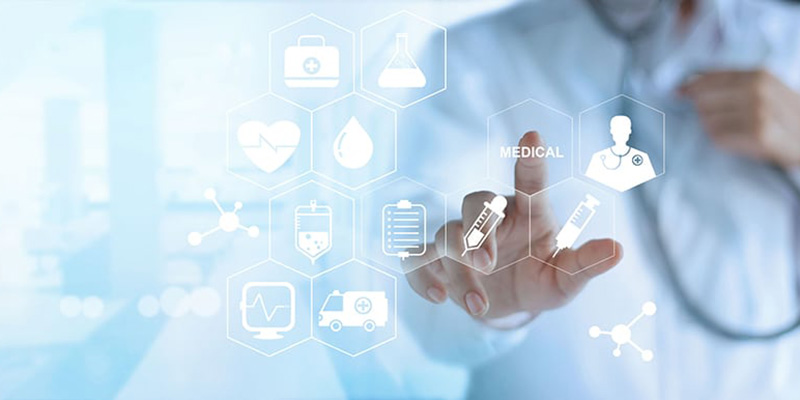
Innovative Technologies In Dentistry
The world is rapidly entering a new age. Some of the professions are either going to extinct or will not be carried out as we know. COVID-19 has expedited the transition to the new era since the last two years. Although we dentists are not able to continue our work remotely, materials, technologies and processes are getting their fair share. First of all, it is quite clear that workflow is now getting more and more digital. The researchers are focusing on, "How can we bring personal oral care devices, modernized dental education and experiences of patients in the clinic to the best?"
With electronic data storing, data analyzing, innovative diagnosis devices, new preventive methods and various other treatment options the world changing digital revolutions is changing dentistry as well and bringing in a innovative perspective to the traditional dental practice. Here are some of the technologies which will impact the 21st century most:
Digital Dentistry
The more information we get in the field of dentistry, determining patient's age, medical and dental history, their genome, susceptibilities, potential diseases, gets easier and treatments can be optimized according to individuals, physiology and genetics.
With an electric toothbrush-sized device called "Canary", we can detect cracks and caries that are too small to show up on an x-ray by doing a three-second scan, an toothbrush-sized device emits pulsing red laser light. Another device, the "S-Ray" ultrasonically maps both teeth and gums in 3-D to find cavities and disease. Neither of the two systems expose patients to harmful radiation.
Bioprinting
One of the most important innovations in dental technologies is utilizing 3D printers in clinics. With the currently used CAD/CAM (Computer Aided Design/Computer Aided Manufacturing) technology, dentists are engaged in new studies that will make a difference in their treatments. A group of academics at the University of Groningen in the Netherlands are working on structures that could add tooth decay-fighting chemicals to 3D fabricated teeth.
A team at Wake Forest University in North Carolina is working on creating human body parts and jawbone using a mixture of living cells and gel, with the goal of creating living human tissues. These promising studies may be beneficial for patients with tissue loss due to oral cancers.
Periodontist Saso Ivanovski of Griffith University in Queensland, Australia, designed new jawbone and gum tissue with samples taken from a patient's cells in order to replace lost parts. Traditionally, bone and tissue taken from the hips or jawbones have been used, but this practice can revolutionize the field.
Smart Toothbrushes
New Generation toothbrushes are no longer just for people to maintain their dental and oral care, they are also becoming fun and informative. In the article "New Toothbrush Designs, Innovations and Technologies" published by Jon Love on January 13, 2022, there will be some features of the new generation toothbrushes. On new brushes: Sustainability will be provided with more environmentally friendly recyclable brushes and soil-soluble materials. Efficiency will be achieved with brushes that clean teeth in a shorter time and provide cleaner results and most interestingly, Connectivity will be provided by smart phone-supported smart dental products that can communicate with each other, aiming to improve oral hygiene routines. Recent studies show that electric toothbrushes provide a more effective cleaning.
Augmented Reality
Augmented Reality is a technology that we hear more and more. In dentistry, it has already started to use this technology in different countries of the world, both in the training of physicians and to enrich the treatment experience of patients.
Virtual Reality (VR)
Virtual Reality offers the user an environment in which they can experience the real world one-on-one in a 3D virtual universe through a pair of glasses. With this technology, dentistry students and graduates are provided with the opportunity to improve themselves, learn about risky surgeries, and connect from their homes to operating rooms in different parts of the world, to surgeries with different doctors.
From the patient's point of view, VR reduces the anxiety of patients, giving physicians the opportunity to work with calmer, more comfortable patients and shortens the operation time.
Tele-Dentistry
One of the most important obstacles for dentists to help their patients is distance. Tele-dentistry: It is the physician's ability to make diagnosis and treatment planning for his patient who is far away. It could be a useful model for people who can't get to a physician easily, especially in rural areas, and receives inadequate service.
This practice may be real-time in the form of a video conference in which the patient and physician can see, hear, and communicate with one another, as well as the transmission of clinical information and static images collected and stored by the dentist, as well as consultation and treatment planning information. Patients can be connected to virtual dental health clinics thanks to technology advancements in the field of tele-dentistry, ushering in a new era of dentistry.

 Türkçe
Türkçe English
English Français
Français русский
русский Español
Español